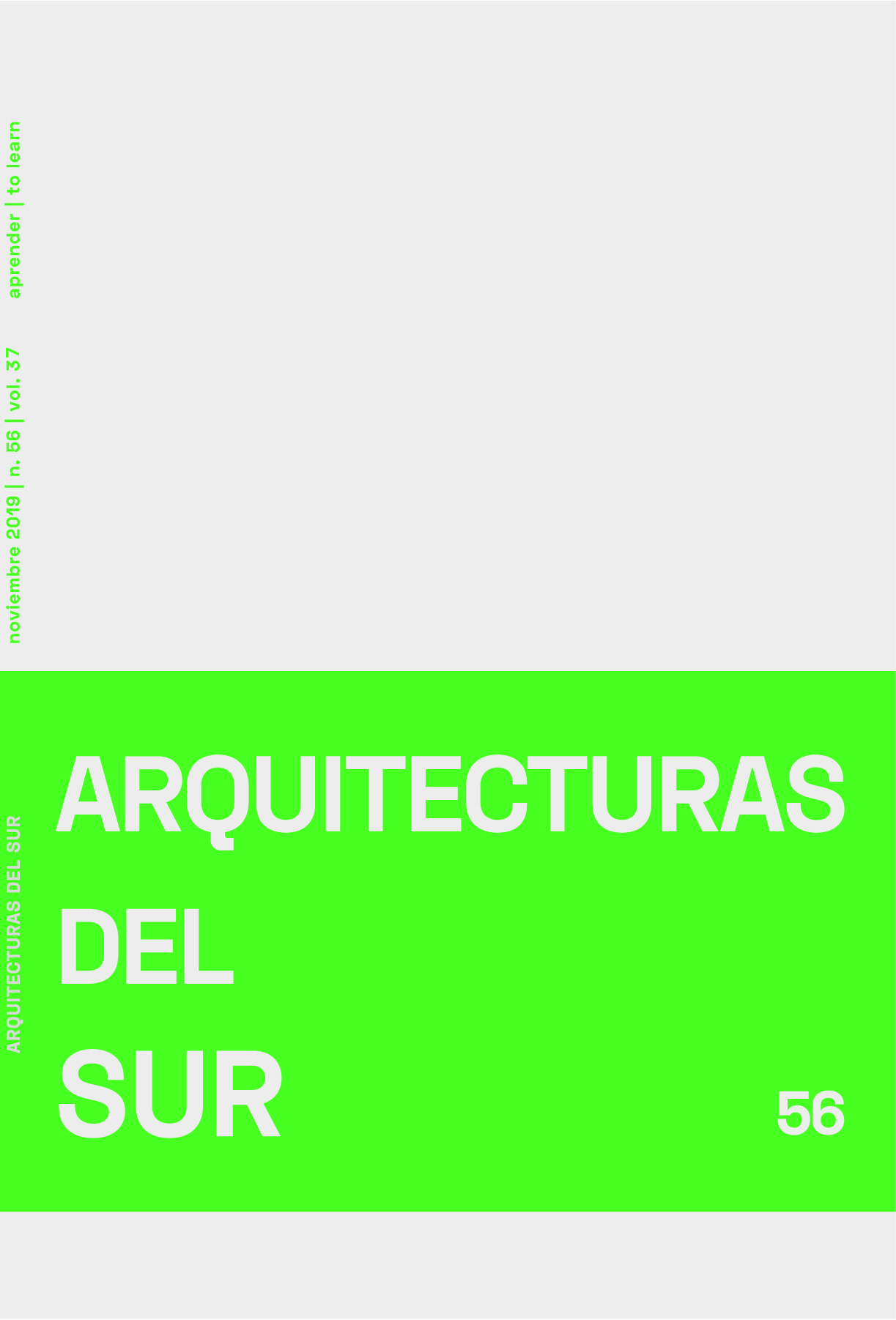Mysterious? For whom? Towards a decolonization of the teaching-learning of the history of architecture
DOI:
https://doi.org/10.22320/07196466.2019.37.056.05Keywords:
Teaching, learning, history, architecture, decolonialAbstract
This article sets out to assess the teaching-learning of the history of architecture in Argentina considering its development and transformations throughout the twentieth century, and based on this evaluation, concludes with the proposal implemented in the teaching at the School of Architecture, Design and Urbanism at the University of Buenos Aires (FADU UBA). It is understood that the structuring of the current courses in the official Argentine regulations has not substantially altered the canonical, nineteenth-century, colonial model imposed by Sir Banister Fletcher (1866-1953) in his A History of Architecture on a Comparative Method, whose first edition dates to 1896. A glance at the minimum compulsory content of the History of Architecture course in the plan of study at the FADU UBA (and a good number of Argentine universities), as well as the requirements established by CONEAU, the state agency dedicated to the evaluation and accreditation of university degrees, is enough to notice that the cases and problems studied today are still mainly European or North American, with a few local topics “incorporated.” Teachers like Juan Goytisolo, Edward Said, Tzvetan Todorov and Mary Louise Pratt have taught that the world in which we live is largely governed by a perspective that makes invisible or subordinates non-Western, non-white, non-male “others” -- that is, eighty percent of humanity, including our region. The preceding generation focused on “discovering” and “incorporating” local and regional studies. It is firmly believed that the mission of this generation is to completely dismantle the colonial model and build a History of Architecture based on interculturality, complexity and contradiction -using Venturi’s beautiful words- that defines all cultural processes.
Downloads
References
Goytisolo, J. (1992). El Legado Andalusí: una perspectiva Occidental. University of Pennsylvania. Filadelfia, EEUU. Recuperado de http://ccat.sas.upenn.edu/romance/spanish/219/04edadmedia/goytisololegado.html
Gutiérrez, R. (1988). Identidad en la arquitectura argentina. Cuadernos de Historia IAA (4), 1-64.
Henni, S. (2018). E-flux Architecture. Nueva York, EEUU. Recuperado de https://www.e-flux.com/architecture/history-theory/225180/colonial-ramifications/
Jarzombek, M. (1999). The disciplinary dislocations of (architectural) History. Journal de la Society of Architectural Historians, 58(3), 488-493.
Martínez Nespral, F. (2015). Cátedra Martínez Nespral. Buenos Aires, Argentina. Recuperado de: http://www.catedrafmnespral.com.ar/
Molina y Vedia, J. M. (1988). Notas acerca de la nacional y las ideas en la arquitectura. Cuadernos de Historia IAA (4), 55-60.
RTVE. (1989). El espacio en la ciudad islámica. Radio y Televisión Española. Madrid, España. Recuperado de http://www.rtve.es/alacarta/videos/alquibla/alquibla-espacio-ciudad-islamica-03-11-10/920755/
Said, E. (1978). Orientalism, Nueva York, EEUU: Pantheon Books.
Said, E. (2002). Prólogo a la edición española de Orientalismo. Barcelona, España: Ramdon House Mondadori.
Downloads
Published
How to Cite
Issue
Section
License
The content of the articles published in each issue of Arquitecturas del Sur is the sole responsibility of the authors and does not necessarily represent the opinion of University of the Bío-Bío.
The authors will maintain their copyright; however, they will guarantee the journal the right to first publication and dissemination of their work. The publication of the article in Arquitecturas del Sur will be subject to the Creative Commons International license (CC BY-SA) that allows others to adapt: remix, transform and build on the material for any purpose, even commercially; share: copy and redistribute the material in any medium or format, as long as the authorship and first publication in this journal are acknowledged by citing them correctly, and their new contributions are under a license with the same terms.














 Programa de Información Científica/Concurso Fondos de Publicación de Revistas Científicas 2018/ Proyecto Mejoramiento de Visibilidad de Revistas UBB (Código:FP180007)
Programa de Información Científica/Concurso Fondos de Publicación de Revistas Científicas 2018/ Proyecto Mejoramiento de Visibilidad de Revistas UBB (Código:FP180007) 
